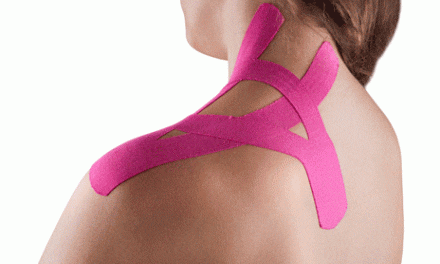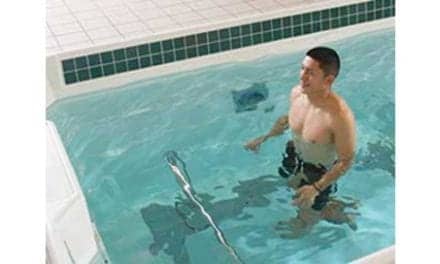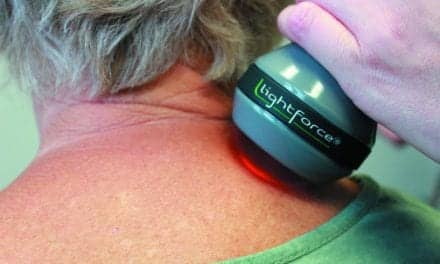Evaluating the modalities and methods that lead to successful treatment of plantar fasciitis
By Andrew Mills, DPT, CSCS, CKTP
Plantar fasciitis is a debilitating condition that affects many people each year. It can be caused by a variety of factors such as improper footwear, increasing exercise routines, and incorrect foot mechanics while walking or running. Pain is usually reported at the insertion of the plantar fascia on the calcaneus and can radiate to the forefoot region. Symptoms are usually reported as being worse in the morning and may ease after a few steps. In chronic cases, pain may last throughout the day. There are a variety of treatment techniques that the physical therapist can employ, such as ultrasound, cold laser, iontophoresis, phonophoresis, and topical analgesics, to name a few.
The “Winlass” Effect
To understand the condition and treatment of plantar fasciitis, an important biomechanical concept called the “winlass effect” must be understood. A “winlass” is, by definition, a “tightening of a rope or cable.”1 The plantar fascia acts as a cable that attaches between the calcaneus and the metatarsal heads and shortens during the propulsive phase of gait, elevating the medial longitudinal arch. According to Maffuli, this creates a more stable arch and a rigid level for push-off.2 This concept is vital, since an alteration in this effect can increase stress of the plantar fascia, and lead to plantar fasciitis.
Common Causes of Plantar Fasciitis
Overpronation is one of the most common causes of plantar fasciitis and can develop from eccentric weakness in the posterior tibialis muscle. This weakness can, in turn, cause elongation of the plantar fascia, which decreases the effect of the winlass mechanism and causes instability during the propulsion phase of gait.3,4,5
Structural deformities, such as excessive subtalar or forefoot varus, can also cause increased pronation and place increased stress on the plantar fascia. Muscle tightness in the Achilles tendon can affect dorsiflexion, causing the foot to compensate by increasing pronation and again placing stress on the plantar fascia. Proximal muscle weakness in the hips can increase stress transmitted through the foot and into the plantar fascia. According to Backstrom and Moore, this weakness can result in greater transmission of shock to the supporting foot structures and inhibit their ability to assist in low-extremity load response.6
Poor footwear with decreased stability and increased mobility in the arch region can also increase stress and decrease shock absorption. When walking and running, this can create both acute and chronic plantar fascia problems.
Technology for Treatment
Physical therapy treatment for plantar fasciitis can include a variety of methods and modalities, which include ultrasound, iontophoresis, cold laser, electric stimulation, stretching, strengthening, topical analgesics, and correcting footwear.
Among the chief treatments physical therapists use to treat the plantar fascia is ultrasound. Depending on the region of tenderness, usually a 3-MHz frequency is used, given the superficial nature of the plantar fascia. The intensity of the ultrasound can vary depending if the condition is more acute or chronic in nature. For acute cases, a non-thermal result is desired, as the region is already inflamed.
The non-thermal range for ultrasound is typically .8 W/cm2 or below, as anything higher can begin to raise the temperature of the tissue being treated, causing further inflammation. Pulsed ultrasound at either 20% or 50% is typically used in the acute stages, to minimize temperature increase and promote tissue healing through cavitation and acoustic streaming. For chronic conditions, a thermal result may be desired to help reduce scar tissue or adhesion formation. These settings would use a continuous sound wave and range from .8 W/cm2 to 2.0 W/cm2 in intensity.
Treatment times for both acute and chronic conditions usually range from 5 to 10 minutes. Mettler Electronics, based in Anaheim, Calif, as well as Rich-Mar, Chattanooga, Tenn, are two companies that offer therapeutic ultrasound equipment for the treatment of a number of conditions, including plantar fasciitis.
Iontophoresis is another treatment to reduce inflammation along the plantar fascia. Iontophoresis relies on electricity to drive a medication across the skin barrier into the inflamed area. This treatment works off the chemistry principle that like charges repel one another.
Usually, the medication Dexamethasone, a mild anti-inflammatory, is used in a 4 mg/mL solution and applied to the negative pad.
Iontophoresis uses a direct electrical current to drive the negatively charged medication into the inflamed region. Usually, the negative end of the patch is placed over the inflamed area, which is most times the heel region. The clinician can then choose the intensity of the current for the treatment area. Many times, iontophoresis may be performed first, followed by ultrasound to drive any residual medication into the inflamed region. ActivaTek Inc and Dynatronics, both based in Salt Lake City, are among companies that offer iontophoretic products for rehabilitation.
Cold laser treatment can also be used in the treatment of plantar fasciitis to help reduce inflammation. Many cold laser units have electric stimulation built into the head of the unit, and allow the clinician to perform both cold laser and electric stimulation treatment at the same time. The frequency of light emitted by the cold laser is absorbed by the cells and promotes tissue healing and pain relief. Treatment times for the cold laser can range from 5 to 10 minutes. Companies such as Pivotal Health Solutions, based in Watertown, SD, and Chattanooga, a DJO Global company, headquartered in Vista, Calif, manufacture lasers designed for cold therapy treatment. Other manufacturers of therapeutic laser devices include Multi Radiance Medical, Solon, Ohio, and LightCure, Newark, Del.
Electric stimulation is an effective way to reduce pain along the plantar fascia. A pre-mod setting can be used to send electrical current through the heel region or along the arch of the foot using two electrodes. Electrical stimulation can be combined with the use of ice for more of an analgesic effect. Rich-Mar and Irvine, Calif-based Zimmer Medizin Systems are among the manufacturers that offer a variety of therapeutic electrical stimulation devices
Ankle Stretching and Strengthening
Stretching is an important aspect of the treatment of plantar fasciitis, as increased tightness in the plantar fascia and in the heel cord muscles is usually problematic. Gastronemius and soleus stretching should be performed, along with specific stretching to the plantar fascia itself. This can be done through dorsiflexion of the ankle along with extension of the toes. Use of a golf ball or tennis ball to roll along the bottom of the foot can also help gently stretch the plantar fascia. Along with stretching, strengthening the ankle—and specifically, the arch of the foot—is also important. This importance is magnified if the cause of the inflammation is due to decreased arch support or increased pronation due to weakness. Strengthening of the posterior tibialis, flexor hallucis longus, and flexor digitorum will help support the arch, decrease collapse of the arch, and prevent overpronation.
The use of topical analgesics such as creams or gels can provide temporary relief from pain. These can be effective at night, as pain can increase when inactive. Among the companies that offer topical pain relief products are Sore No More, Moab, Utah, and Sombra, Albuquerque, NM.
Taping As Treatment
Several taping methods can be used to decrease tension, such as low-dye taping or a standard arch taping if there is decreased stability and strength in the medial longitudinal arch. Taping can quickly decrease overall pain while providing support to the plantar fascia and medial arch. Therapeutic tape is offered by several companies, such as Kinesio, headquartered in Albuquerque, NM, and Lumos Inc, Lindon, Utah, makers of KT Tape.
Mission Accomplished
Effective treatment of plantar fasciitis begins by identifying the cause. Through use of the modalities and treatments explored here, inflammation can be effectively reduced and resolution of plantar fasciitis can occur. Treated correctly, this condition can resolve and allow individuals to return to normal routines free of pain. PTP
Andrew Mills, DPT, CSCS, CKTP, is clinic manager of CORA Rehabilitation in Port Orange, Fla. He earned his DPT from the University of St Augustine in 2010. Mills obtained his Kinesio taping certification through the KTA. For more information, contact [email protected].





